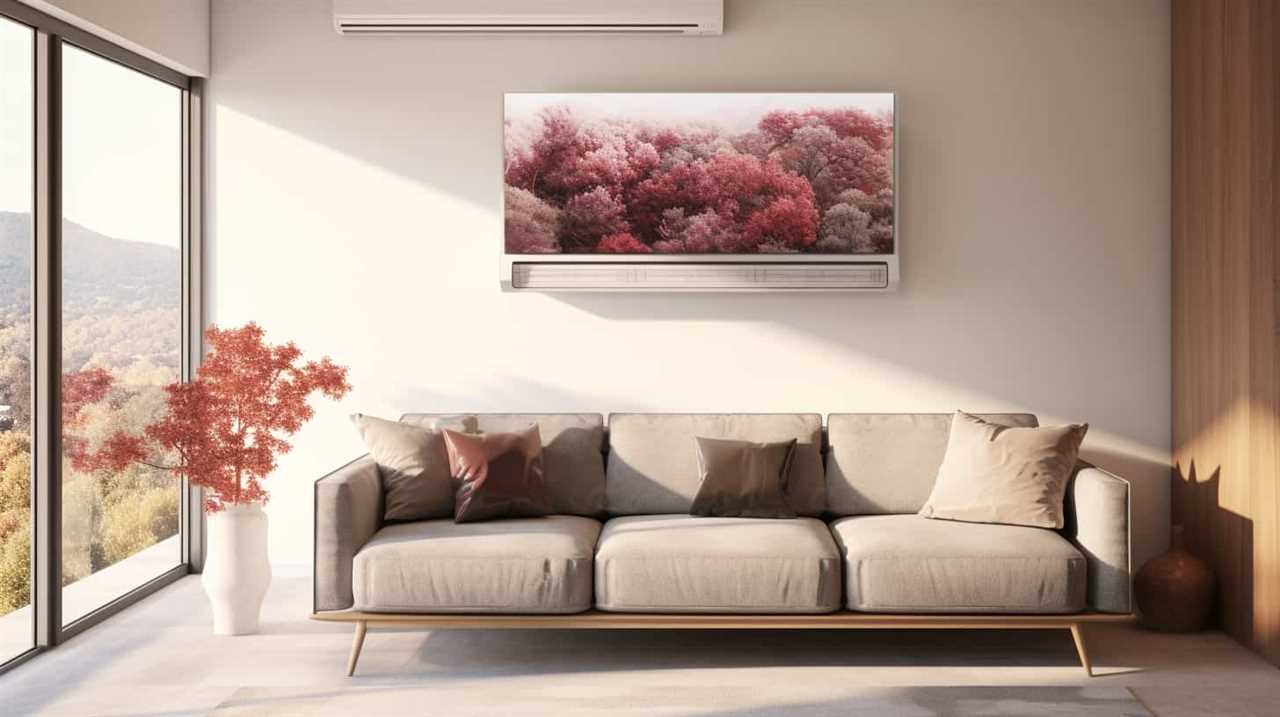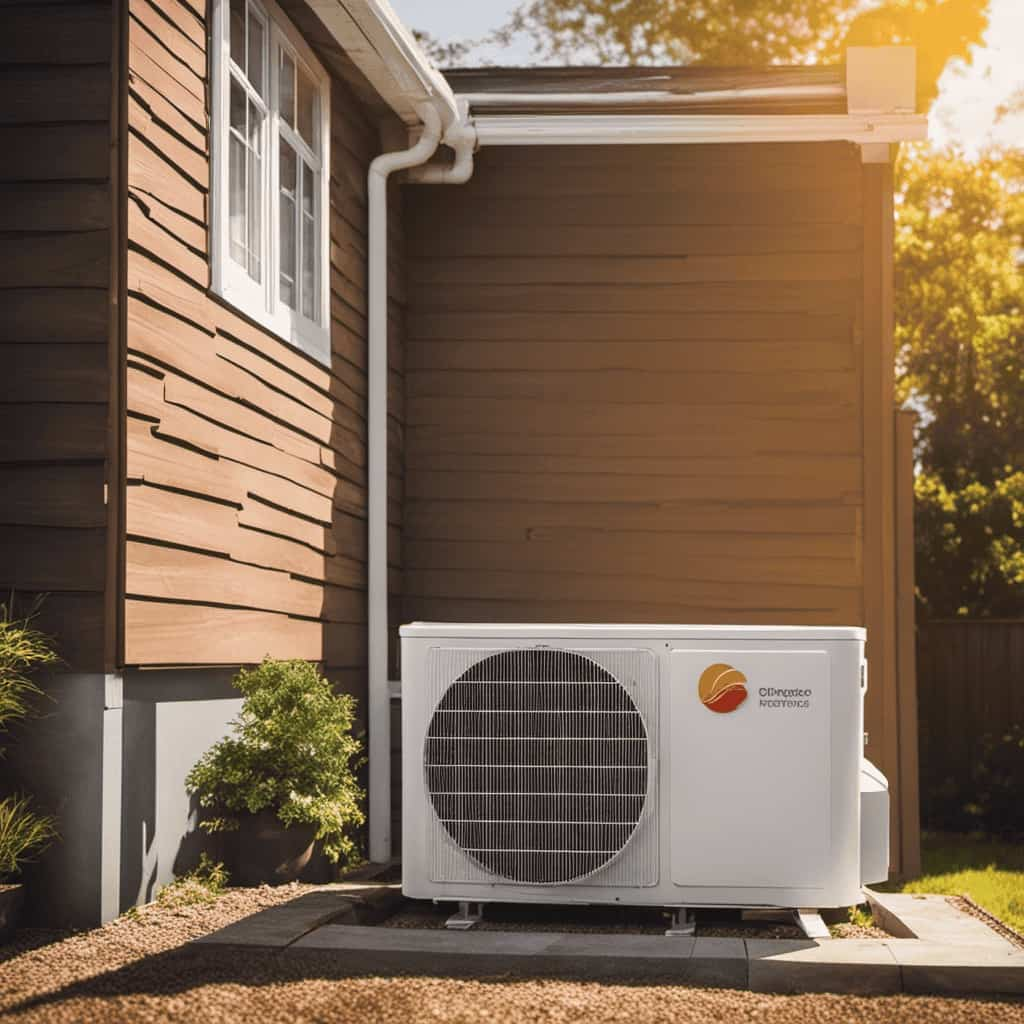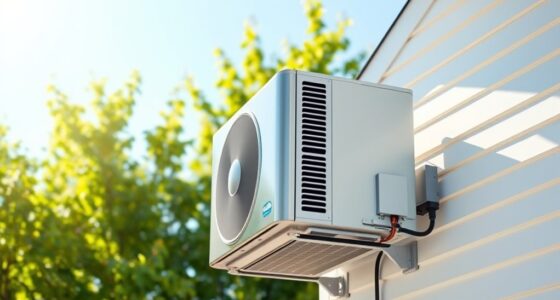Are you fed up with sweating during the summer? Don’t worry! We have a simple and effective solution for your air conditioning heat pump problems.
In just 30 minutes, you can perform essential maintenance tasks to keep your unit running smoothly and efficiently. From cleaning air filters to inspecting coils, we’ve got you covered.
So grab your tools and let’s get started on your path to a cool and comfortable home.
Key Takeaways
- Regular maintenance is crucial for optimal functioning and longevity of air conditioning heat pumps.
- Cleaning and replacing air filters regularly improves system performance and prevents issues.
- Checking and cleaning the outdoor unit prevents common issues and ensures sufficient cooling.
- Inspecting and cleaning indoor coils ensures optimal performance and air quality.
Importance of Regular Maintenance
Regular maintenance is crucial for us to ensure the optimal functioning and longevity of our air conditioning heat pumps. Skipping maintenance can result in costly repairs and decreased energy efficiency.

One common mistake is neglecting to schedule regular check-ups with a professional technician. These check-ups allow for early detection of any potential issues and help prevent major breakdowns.
Another mistake is failing to clean and replace air filters regularly. Dirty filters restrict airflow, leading to poor indoor air quality and reduced system performance.
Inadequate maintenance can also cause the heat pump to work harder, resulting in increased energy consumption and higher utility bills. By addressing these common maintenance mistakes and regularly cleaning the air filters, we can ensure that our air conditioning heat pumps operate efficiently and effectively.
Now let’s delve into the process of cleaning the air filters.

Cleaning the Air Filters
To keep our air conditioning heat pumps running efficiently, we should regularly clean the air filters and remove any accumulated dust and debris. Cleaning the air filters is a crucial step in maintaining the performance and longevity of our heat pumps.
Over time, air filters can become clogged with dirt, pollen, and other particles, obstructing the airflow and reducing the efficiency of the system. By removing debris from the air filters, we can ensure that the heat pump operates at its optimal level, providing us with cool and clean air. Not only does this improve air quality, but it also helps to prevent potential issues such as frozen coils or overheating.
Now that we’ve cleaned the air filters, let’s move on to the next step: checking and cleaning the outdoor unit.
Checking and Cleaning the Outdoor Unit
Let’s start by inspecting and cleaning the outdoor unit to ensure its proper functioning. The outdoor unit plays a crucial role in the heat pump system, as it houses the compressor and condenser coils. Over time, debris such as dirt, leaves, and grass can accumulate on the unit, hindering its performance. To prevent common outdoor unit issues, it is important to regularly check and clean it. Here are a few troubleshooting tips to help you maintain your outdoor unit:
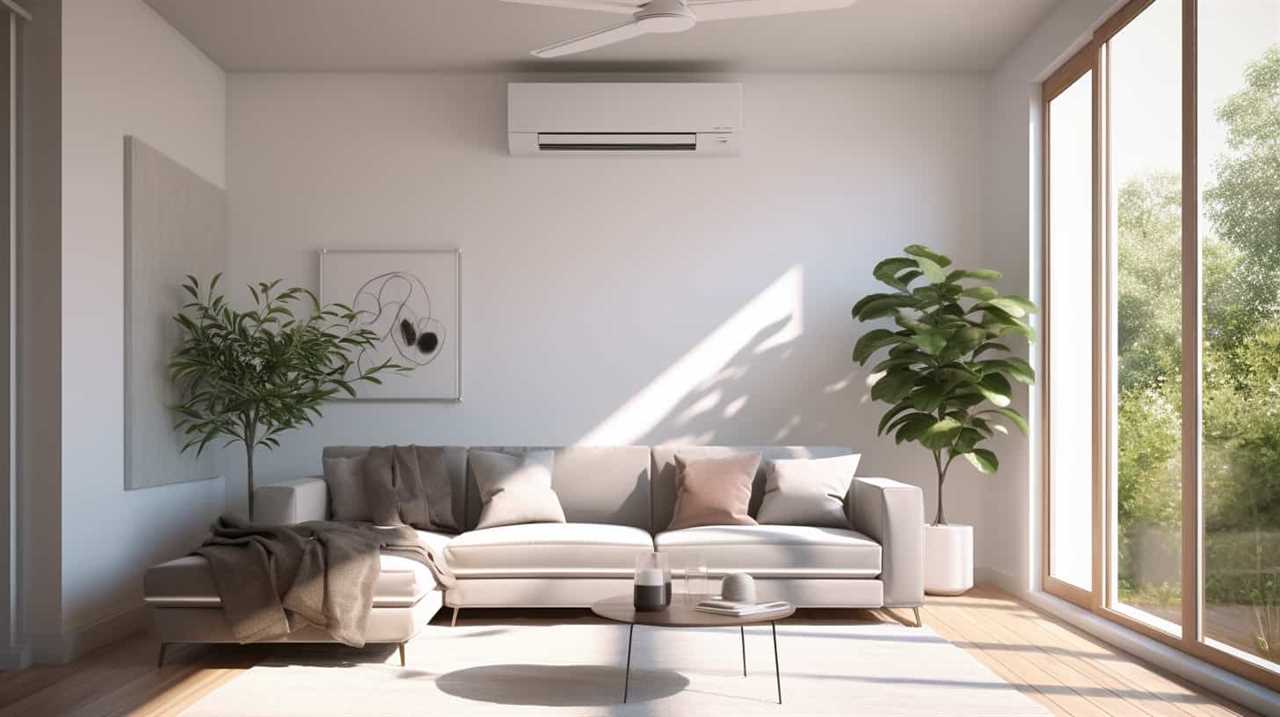
| Common Issues | Possible Causes | Solutions |
|---|---|---|
| Insufficient cooling | Dirty condenser coils | Clean the coils |
| Strange noises | Loose fan blades | Tighten fan blades |
| Unit not turning on | Faulty capacitor | Replace the capacitor |
Inspecting and Cleaning the Indoor Coils
Occasionally, we need to inspect and clean the indoor coils to ensure optimal performance of our air conditioning heat pump system. Here are some cleaning techniques and coil maintenance tips to help you keep your system running smoothly:
-
Turn off the power: Before starting any maintenance, make sure to turn off the power to the unit to avoid any accidents.
-
Remove debris: Gently brush away any visible dirt or debris from the coils using a soft brush or vacuum cleaner.
-
Clean with a coil cleaner: Apply a commercial coil cleaner to the coils, following the manufacturer’s instructions. This will help remove any stubborn dirt or grime.

-
Rinse with water: Use a hose or a spray bottle to rinse the coils with water, making sure to remove all traces of the cleaner.
-
Dry thoroughly: Allow the coils to air dry completely before turning the power back on.
Lubricating Moving Parts
We can lubricate the moving parts of our air conditioning heat pump system to ensure smooth operation and minimize friction. By regularly lubricating these parts, we can prevent rust and reduce friction, which can lead to increased efficiency and prolong the lifespan of our system. The table below provides a list of the key moving parts that require lubrication and the recommended lubricant to use:
| Moving Part | Recommended Lubricant |
|---|---|
| Fan Motor | Electric Motor Oil |
| Blower Motor | SAE 20 Oil |
| Bearings | Grease |
| Pulleys and Belts | Belt Dressing Spray |
Testing and Calibrating Thermostat
When it comes to maintaining an air conditioning heat pump, proper thermostat calibration is essential. We need to ensure that the thermostat is accurately reading and controlling the temperature in the space.
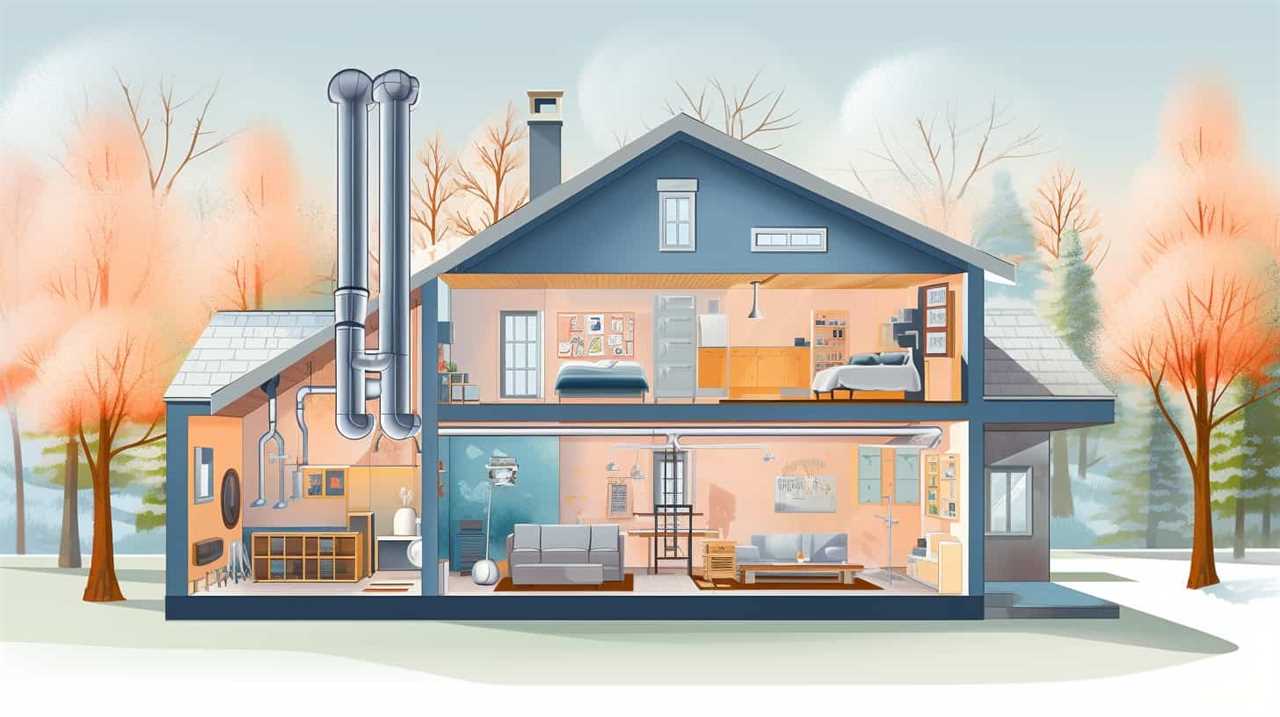
Testing the thermostat functionality is crucial to identify any issues and make necessary adjustments.
Regular maintenance of the thermostat is of utmost importance to ensure optimal performance and energy efficiency of the HVAC system.
Proper Thermostat Calibration
Let’s start by testing and calibrating the thermostat to ensure proper functionality. A correctly calibrated thermostat is crucial for maintaining the desired temperature and maximizing energy efficiency.
Here are some steps to follow for proper thermostat calibration:

- Check the temperature accuracy by comparing the thermostat reading with a separate thermometer.
- Verify that the thermostat is level to ensure accurate temperature sensing.
- Clean the thermostat’s interior components, including the bimetallic coil and contacts, to remove any dirt or debris that may affect its performance.
- Test the thermostat’s programming capabilities to ensure it can accurately follow the desired temperature schedule.
- Consider upgrading to a programmable thermostat for added convenience and energy savings.
By calibrating the thermostat, you can prevent temperature inconsistencies and potential HVAC system malfunctions.
Now, let’s move on to testing the overall functionality of the thermostat.
Testing Thermostat Functionality
To ensure the proper functionality of the thermostat, it’s important to test and calibrate it. Thermostat troubleshooting is an essential step in maintaining a comfortable indoor environment.
Start by checking the thermostat settings to ensure they’re correctly programmed. If the temperature displayed on the thermostat doesn’t match the actual room temperature, it may need recalibration. Use a separate thermometer to compare the readings. If there’s a discrepancy, refer to the manufacturer’s instructions to calibrate the thermostat accordingly.
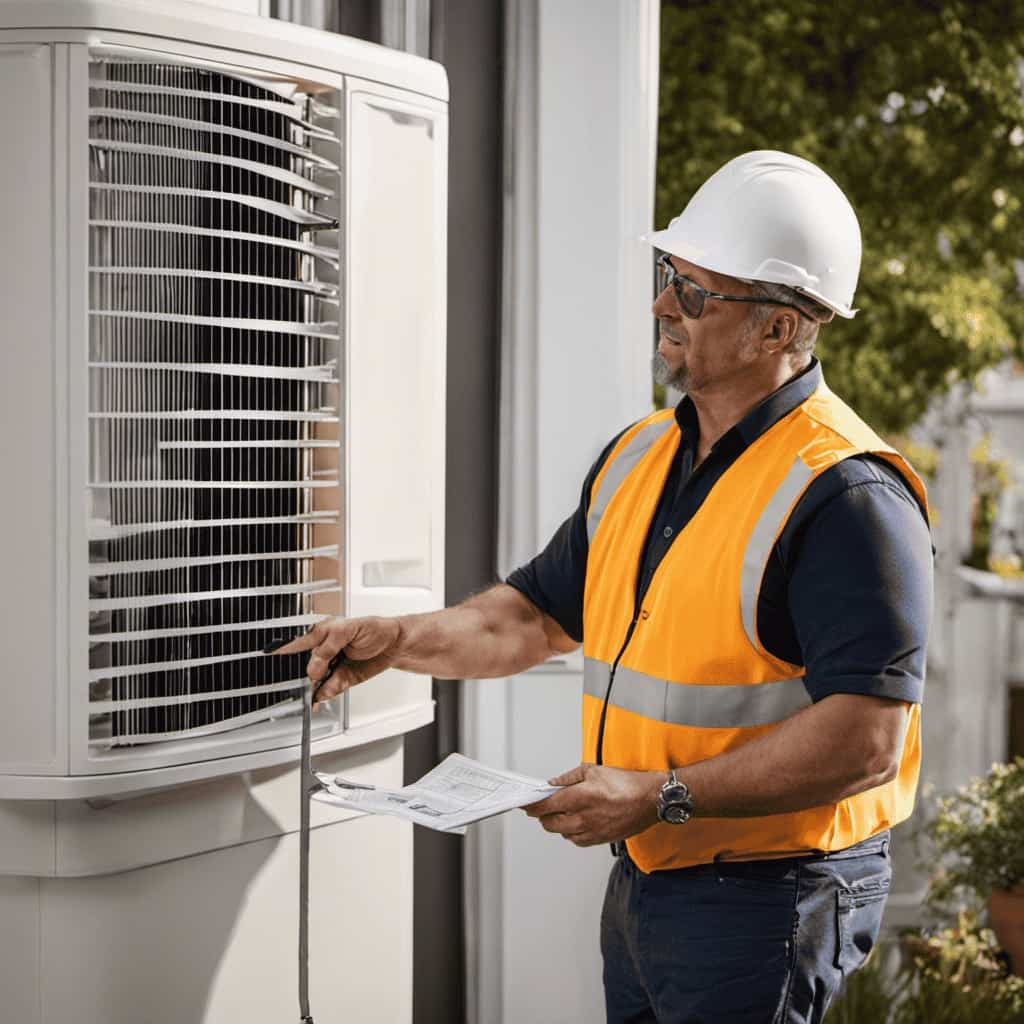
Additionally, test the thermostat by adjusting the temperature settings and observing if the heating or cooling system responds accordingly. This will help identify any issues with the thermostat’s communication with the heating and cooling equipment.
Testing and calibrating the thermostat is crucial for accurate temperature control and efficient energy usage.
In the next section, we’ll discuss the importance of regular thermostat maintenance.
Importance of Thermostat Maintenance
We highly recommend regularly testing and calibrating your thermostat to ensure optimal performance and accurate temperature control. Maintaining your thermostat is crucial for efficient air conditioning and heat pump operation. Here are some reasons why thermostat maintenance is important:

-
Proper temperature control: A well-calibrated thermostat ensures that your HVAC system accurately maintains the desired temperature in your home.
-
Energy efficiency: A malfunctioning thermostat can result in wasted energy and higher utility bills.
-
System protection: Regular maintenance helps identify and address any issues with the thermostat, preventing potential damage to the HVAC system.
-
Comfort optimization: A properly functioning thermostat provides consistent and comfortable indoor temperatures.

-
Troubleshooting: Testing and calibrating your thermostat can help identify and resolve common thermostat problems, such as inaccurate temperature readings or unresponsive controls.
Scheduling Professional Annual Maintenance
We should make sure to schedule professional annual maintenance for our air conditioning heat pump. Scheduling service with reliable technicians is essential to ensure the optimal performance and longevity of our equipment.
When it comes to finding reliable technicians, we should look for companies that have a good reputation and positive customer reviews. It’s also important to check if they’re licensed and insured, as this guarantees their expertise and protects us from any potential liabilities. Additionally, we should inquire about their experience and training to ensure they’re knowledgeable about our specific air conditioning heat pump model.
Frequently Asked Questions
How Often Should I Clean or Replace My Air Filters?
We should clean or replace our air filters regularly to ensure optimal performance. By choosing the right filter and following tips for extending its lifespan, we can maintain clean air and prolong the life of our air conditioning heat pump.
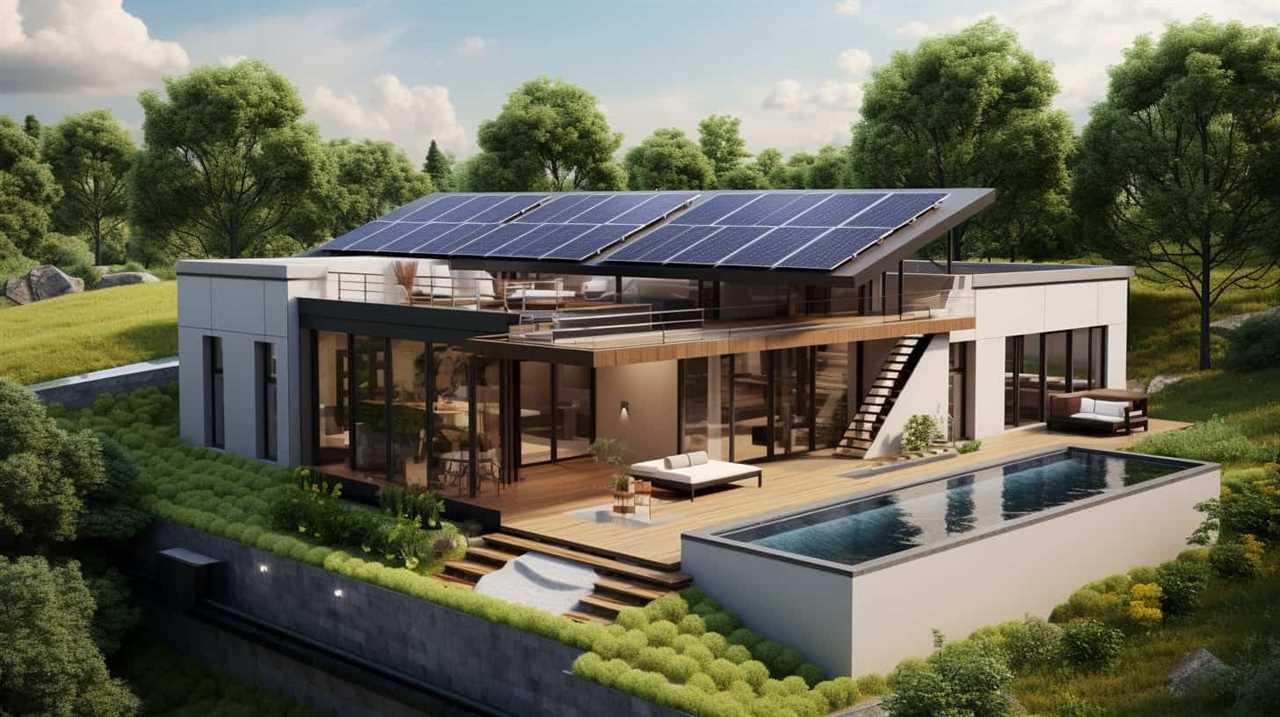
Can I Clean the Outdoor Unit by Myself, or Do I Need to Hire a Professional?
We can clean the outdoor unit ourselves, but hiring a professional has its benefits. DIY outdoor unit cleaning saves money, but professionals have expertise and can ensure thorough cleaning, preventing damage and optimizing performance.
Are There Any Specific Cleaning Agents or Techniques That I Should Use to Clean the Indoor Coils?
When cleaning indoor coils, it’s crucial to use the right cleaning agents and techniques. For example, we recommend using a coil cleaner specifically designed for HVAC systems and a soft brush for gentle scrubbing.
How Often Should I Lubricate the Moving Parts of My Air Conditioning Heat Pump?
We should inspect the refrigerant levels of our air conditioning heat pump regularly to ensure optimal performance. Signs of a malfunctioning heat pump include insufficient cooling or heating, strange noises, and frequent cycling.
Is It Necessary to Calibrate the Thermostat, and if So, How Often Should I Do It?
Calibrating the thermostat is essential for optimal performance. Regular calibration ensures accurate temperature control, like a compass guiding a ship. It maximizes energy efficiency, comfort, and system longevity. We recommend calibrating annually.
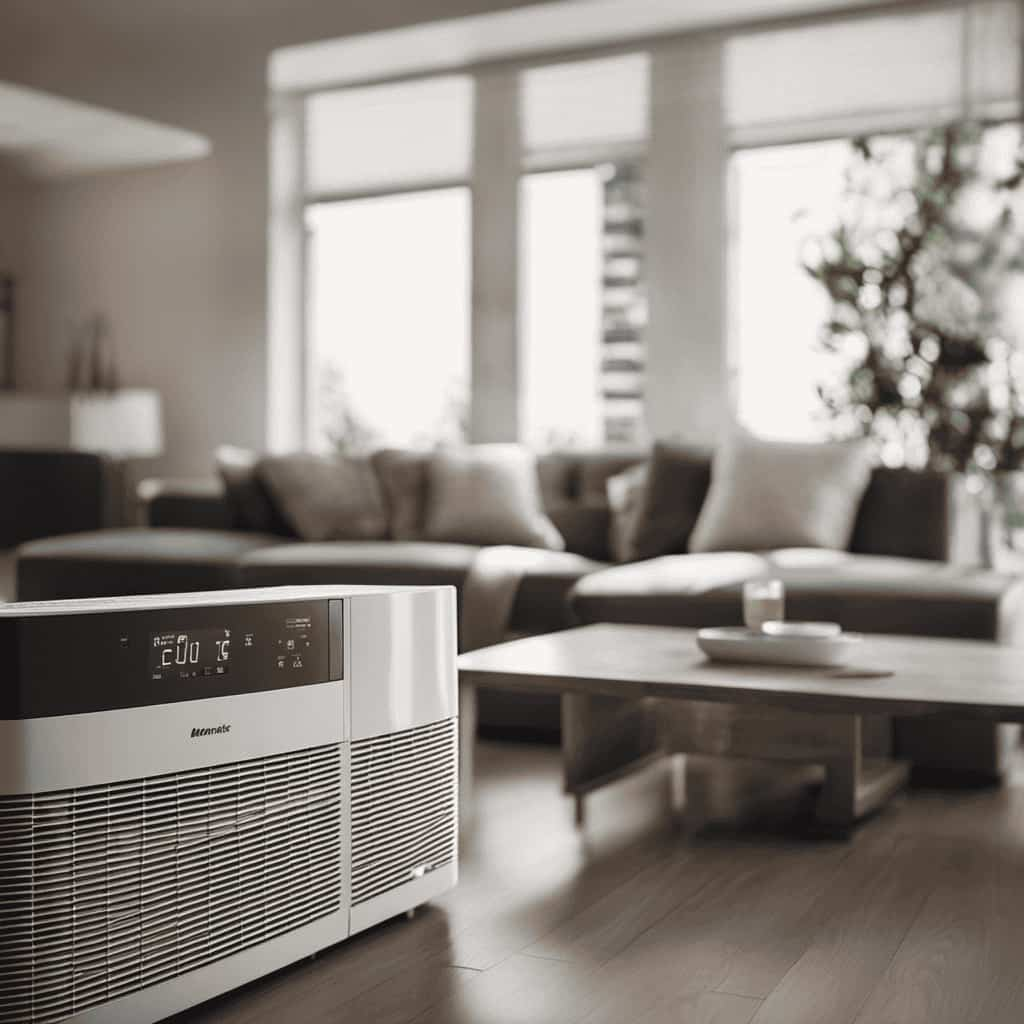
Conclusion
In the ever-changing landscape of maintenance, ensuring the optimal performance of your air conditioning heat pump is crucial.
By following this quick 30-minute guide, you can keep your system running smoothly and efficiently.
Remember, just as we maintain our bodies, our machines need care too.
So, take charge and be the guardian of your cooling system’s well-being.
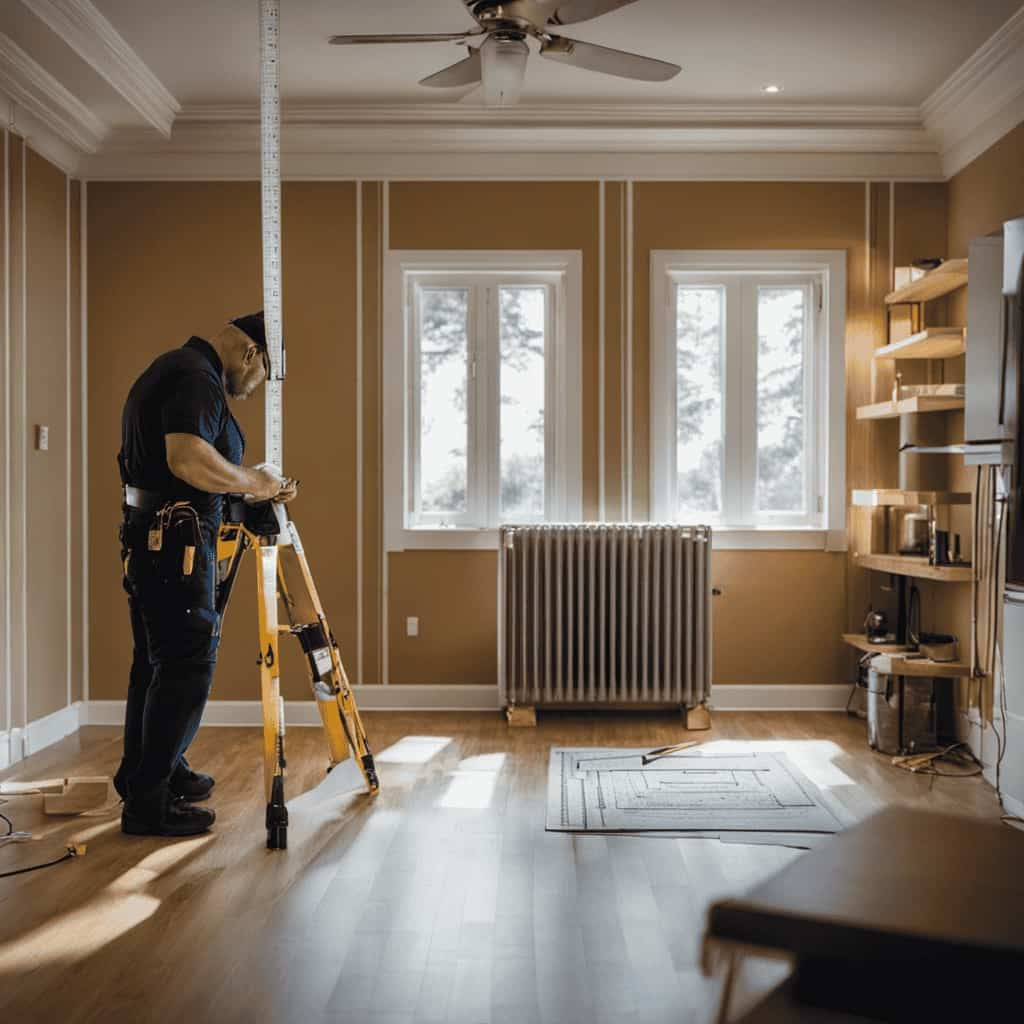
Let your maintenance rituals symbolize the commitment you have towards a cool and comfortable environment.
